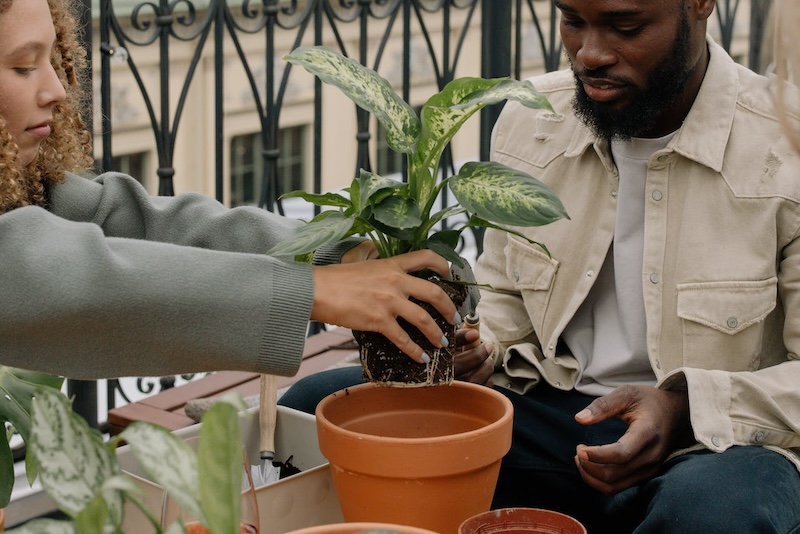Dieffenbachia has some of the biggest and most beautifully variegated foliage of all tropical houseplants. A thriving plant has a strong central stem with densely sprouting foliage at all stem joints. As these plants age, they naturally shed their lower leaves to focus more energy on supporting the top growth, making the plant top-heavy and susceptible to toppling or breaking off. To keep the growth compact, you can cut the plant back and use the cuttings to multiply your plant stock.
Methods To Propagate Dieffenbachia
The easiest method to propagate Dieffenbachia is to separate the rootball into smaller plants while the plant is still young and without a central stem. After the plant has aged a few years and has developed a central stem, division will not be possible and cuttings will need to be taken. You can cut off the top of the plant and replant it, and cut 6-8 inches of stem pieces that will resprout leaves from the nodes. Nodes are the bumps between the lined sections of the stem.

Best Rooting Media To Propagate Dieffenbachia
Dieffenbachia cuttings require some time to sprout new roots and are best planted directly into a potting mix for houseplants. An all-purpose with added perlite is best for anchoring stem cuttings until the roots grow. The perlite holds moisture remarkably well and will aid in keeping the soil consistently moist without becoming waterlogged.
Dieffenbachia cuttings will also root successfully in water. Change the water every few days to prevent rot. Once the cutting has a large number of roots started, you can pot it in fresh potting mix.

Steps To Propagate Dieffenbachia
Young Dieffenbachia is easy to divide. Each division will already have a root system able to support the entire plant. On the other hand, taking stem cuttings involves a few more steps to grow new plants with strong and healthy root systems.
Step 1 - Cut the top growth off, leaving about 6-8 inches of the stem for replanting.
Step 2 - Cut the main stem back to within 6 inches of the soil. The remaining stub can be left in the pot and watered as usual. Eventually, new leaves will sprout from the nodes in between the lined sections of the stem.
Step 3 - The cut stem can be divided into sections that are at least 6 inches long. Each section can be planted to grow into a plant.
Step 4 - Choose pots that are at least 6 inches in diameter and have excellent drainage. Fill them with an all-purpose potting mix with added perlite.
Step 5 - Place the stem cutting in the soil so the top 2 inches are above the soil. Alternatively, the cutting can be laid on its side and covered with an inch or two of soil in a shallow pot or seed starting flat.
Step 6 - Water regularly until sprouts begin to appear along the stem. This will indicate that roots are forming below the soil.
Caring For Dieffenbachia Cuttings
Stem cuttings are susceptible to overwatering. Let the potting mix dry slightly between waterings. Place the potted cuttings in a semi-shaded location that is protected from strong winds, heavy rains, and direct sun exposure. Growing the cuttings indoors allows more control over the growing environment. When the first leaves appear, feed your cuttings with a diluted liquid fertilizer. Using your regular houseplant food, dilute the mix to one-quarter the strength recommended on the package.
Transplanting Dieffenbachia Cuttings
Cuttings will be ready to transplant into a pot one or two sizes larger when roots begin to show from the bottom drainage holes. Continue to water and fertilize the newly formed plants on a regular schedule. Keep in mind that smaller containers dry out faster than large planters and may need watering more frequently.
 |
Author Robbin Small - Published 11-29-2023 |
